This was published 4 years ago
Earth, air, fire and water: 20 of the world's greatest wonders
By Ute Junker
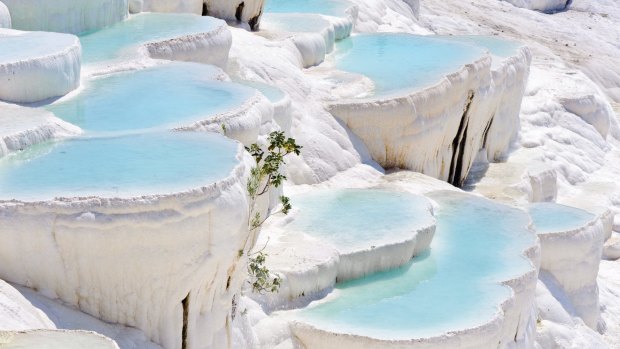
Pamukkale, Turkey.Credit: iStock
Aristotle was wrong, and he wasn't the only one, either. His fellow ancient Greeks were just as confused. So were the Babylonians, Persians and Indians, all of whom believed that matter was made up of a small number of elements: earth, air, fire and water.
Particle physicists will point out just how wrong they were; but those ancients were onto something nonetheless. The four classical elements of nature may not be the building blocks of the universe but they are the foundation of many of our most memorable travel experiences.
Think about the natural wonders you have most admired – from rocky canyons to cascading waterfalls – and chances are at least one of those elements is front and centre.
It's not just the natural world, either. Many of our favourite destinations are inextricably linked to the elements, whether it's a bustling port city from whence explorers and traders once sailed for foreign shores or an ancient monument built from huge blocks of now-weathered stone.
So open yourself to the elements and take some time to appreciate the way they shape our travels.
EARTH: ON SOLID GROUND
It's basic but complicated. Earth is the steadiest element, the most reliable, the least mutable or unpredictable of all – the one that figures in phrases such as "staying grounded" or maintaining "both feet on the ground".
The various labels we apply to the surface that supports us suggest our relationship to the earth is more complex than it might appear. The earth is the thing beneath our feet, the dirt or rock on which we walk and live and build structures – a source of stability.
Yet it is also the name we give our planet, a complex network of lands and rivers and oceans that are constantly in competition with each other, testing each other's boundaries – a state of permanent flux that is far from the solidity we associate with the element of earth.
Earth is also "Mother Earth", the green and fertile nature that springs from the ground. In this guise, the earth is a verdant, vibrant ecosystem burgeoning with leaves and flowers and pods that sprout from trees and shrubs, fungi, vines and ferns, not to mention all the living creatures that survive in and on and around them.
The earth – that singular phrase – is constantly changing. Where earth once provided boundaries – the geological and geographical forms that defined the territories of our ancestors – it has, for better and for worse, become a thing that we shape. From grand stone constructions to complex farming terraces, humans long ago became accustomed to using earth, in its various manifestations, as an element in our grand projects.
Yet even as we reduce the earth to a tool, we can still be reduced by it. The cathedral-like solemnity of an old-growth forest, the invigorating beauty of a field in flower – we may have our feet firmly planted on the earth, but it can also make our spirits soar.
FIVE OF THE WORLD'S MOST EARTHY ENCOUNTERS
GIZA, EGYPT
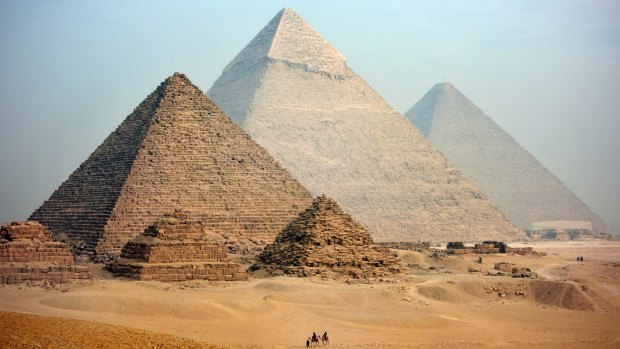
Credit: iStock
Ancient Egyptians were so impressed by the eternal power of mountains that they quarried stone from the earth to create monuments that were just as mighty. And they succeeded: the pyramids at Giza continue to make visitors feel small today, 3000 years after they were built. See egypt.travel
MESA VERDE, COLORADO, US
We use the term "caveman" pejoratively, but there was nothing primitive about the Puebloan people who created a city in the cliffs at Mesa Verde by building brick-and-mortar dwellings – 600 of them – into declivities in the rocky cliffs. These builders thought big: the largest building includes no fewer than 150 rooms. See colorado.com
PONT DU GARD, FRANCE
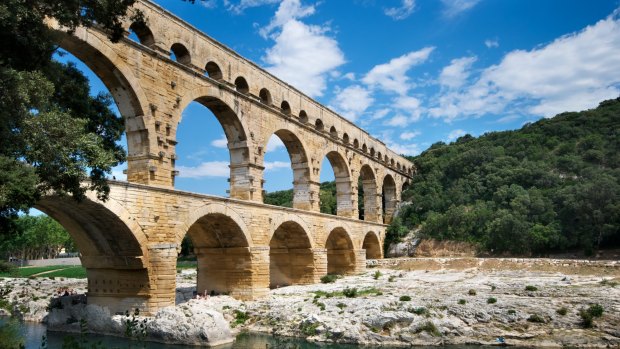
Credit: iStock
As a concept, the bridge is audacious. By spanning a gap, a bridge creates ground where there was none – a truly revolutionary idea. Spectacular as some of today's bridges are, for sheer impact it is hard to beat the triple-tiered aqueduct of the Pont du Gard, among the most impressive engineering feats ever attempted by the Romans. See ee.france.fr
IFUGAO RICE TERRACES, THE PHILIPPINES
A work of art, a marvel of engineering or a strategy for survival? The Ifugao rice terraces are all three. Surrounded by steeply-sloping mountains, the Ifugao people first developed an elaborate system of sculpted rice terraces at least 2000 years ago, fed by forest water that flows through the terraces via a sophisticated system of pipes, dams and channels. See experiencephilippines.org
KUMANO KODO PILGRIMAGE ROUTE, JAPAN
Immersing yourself in nature can have a measurable impact on our wellbeing, something our ancestors seemed to understand instinctively. The towering trees and waterfalls of Japan's Kii Peninsula were revered as gods in their own right, and emperors and samurai performed pilgrimages through this tranquil territory – a restorative experience that is now open to all. See jnto.org.au
AIR: INSPIRATION OF THE HEAVENS
Long before the motion picture was invented, humanity looked to the skies. This infinite celestial screen provided a blockbuster show that never stopped unspooling. While the core cast remained the same – the sun going through his daily routine, the moon in her ever-waxing, ever-waning guises – the daily dramas were intriguingly unpredictable.
Clouds might bunch like heavy-headed peonies or scud past swiftly, their delicate strands dissolving into the blue; action might come in the form of gusting winds that tore leaves from trees or a heavy mist that descended like a curtain, obscuring the view. At night, the stars that blazed overhead formed humanity's first picture book, inspiring myths that still resonate today.
This dazzling realm, so far out of our reach, naturally became seen as the sphere of the gods. In many religions the sky was worshipped as a deity: from the Mesopotamian sky god An and the Zoroastrian divinity Asman to the Egyptian goddess Nut whose image was painted on the ceiling of the pharaohs' tombs.
While humanity trudged along the ground, gods were free to soar through the heavens, like Krishna charging into battle on the back of Garuda. Mere mortals who tried to enter the sacred realm, like Icarus, fared badly. Much safer to do as the Maori did and send kites into the clouds to communicate with gods.
It wasn't just the skies that humans looked up to; we were equally drawn to the forbidding mountains, the peaks of which seemed to scrape the firmament. They too were dwellings of the gods, from Shiva in his lair atop Mount Kailash to Zeus and his clan feasting and feuding on Mount Olympus.
The inaccessibility of the mountains – their dangerous terrain, their thin air – launched the desire to scale the heights, which has become one of our dominant cultural metaphors.
Humanity's habit of gazing upwards has shaped not just our skyscraper-studded cities but our greatest dreams. Even the advent of accessible air travel and the achievements of astronauts who soared beyond the atmosphere itself have not dimmed the inspiration we get simply from raising our faces into the air.
FIVE PLACES WHERE ATMOSPHERE IS ALL
ATACAMA DESERT, CHILE
The night sky has the power to dazzle even the most jaded cynic – but only if you can see it in its full glory, undimmed by electric light. No wonder that dark-sky zones have become in-demand destinations, with Chile's Atacama Desert among the best spots for star-gazing. See chile.travel
LA PAZ, BOLIVIA
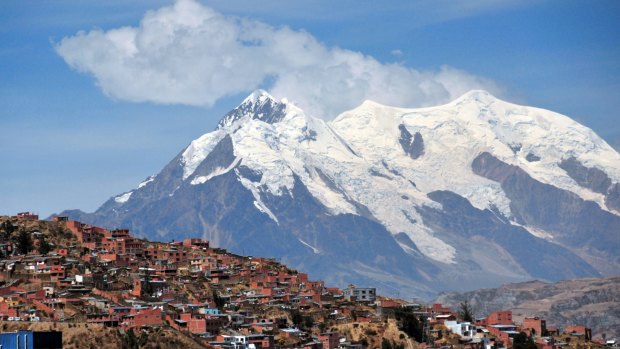
Credit: iStock
Welcome to Bolivia's high society. The city of La Paz sits at an altitude of 3600 metres; no wonder so many visitors find it difficult to catch their breath. Given the city's dramatic topography, the most efficient public transport is its cheap-as-chips cable car, which lets passengers enjoy amazing views along the way.
NORWAY
Scandinavia's harsh winters have one major upside: the chance to experience a dazzling celestial ballet. The aurora borealis, or northern lights, is a cosmic light show that spatters the night sky with brilliant streaks of green and blue, pink or violet; the long night winter nights are prime viewing time. See visitnorway.com
MASAI MARA, KENYA
For a species accustomed to looking up, taking to the skies was a revelation that reframed our view of the world. These days, looking down from above is less remarkable unless, that is, you are on safari. For a different game-viewing experience, ditch the morning game drive and drift through the dawn in a hot air balloon, gazing down on elephant herds and snoozing crocodiles. See magicalkenya.com
BHUTAN
One of the most eye-catching sights in Bhutan is the endless array of prayer flags that line roads and hang from houses and temples. In the local Buddhist tradition, also practised in areas such as Tibet, the colourful flags fluttering in the wind are believed to release blessings through the atmosphere. See bhutan.travel
FIRE: THE FORCE OF FLAMES
Fire is the element that most demands our attention, precisely because it can so easily escape our control, as our fellow Australians have become bitterly aware. Our every encounter with fire is laced with potential danger, whether we are sitting in front of a log fire or gazing at the glowing heart of an active volcano.
Yet fire can also be a temptress. Few things are as hypnotic as staring into dancing flames and part of fire's hypnotic charm is its undeniable menace: without fire, human history would have been entirely different or non-existent.
From our earliest days as a species, fire warmed us, helped us fight off wild beasts and transformed marginally-edible foodstuffs into meals that not only tasted better than the raw materials we scavenged, but also helped build up our strength and brain capacity. Civilisation, you could say, was built upon a well-cooked steak – by which measure, an Argentine grill house might be considered a sacred site.
Food is not the only thing transformed by fire. Nothing touched by fire is left unchanged and although these days we tend to see that aspect of fire as destructive, our ancestors viewed fire's transformative power as magical, even purifying – hence the ritual role assigned to flames by so many different civilisations.
Fire has also shaped humanity through its ability to literally shed light on things. These days, when we can flood our surroundings with light with just a flick of a switch, the power of fire to dispel darkness is easily underestimated. During the millennia when flames were the only reliable source of light, artists were constantly in search of new methods and techniques to harness their power.
Long before the Byzantines covered canvases and walls with swathes of gold leaf to capture and reflect the glow of the flame, humans were creating fire-focused art. Prehistorians suggest the creators of the Lascaux cave paintings would move their grease lamps, and the small pools of light that they cast, during storytelling sessions, focusing attention on one image at a time, like a primitive animation.
FIVE FABULOUSLY FIERY EXPERIENCES
DUNHUANG, CHINA
Art was perceived differently before it was hung in brightly-lit galleries. For the creators of the Buddhist masterpieces inside the caves at Dunhuang –45,000 square metres of murals and 2400 statues – the reveal was an essential part of the experience. Although guides today use torches instead of flame, the impact is still powerful. See travelchina.gov.cn
PAMUKKALE, TURKEY
Along with light, fire also brought our ancestors the blessings of heat. We know the ancient Greeks enjoyed soaking in the hot springs at Pamukkale in Turkey, where the water is heated by fiery magma beneath the earth's surface. Today, these eye-catching pools of ultra-blue water, set amid a cascade of travertine terraces, are as alluring as ever. See goturkey.com
SAINTE-CHAPELLE, PARIS
Medieval architects worked not just with brick and stone, but also with a more ephemeral material – light. Gothic architecture harnessed the power of light to celebrate the transcendent release of religion, most spectacularly in Paris' Sainte-Chapelle, where banks of candles would have set the soaring panels of stained glass aglow like jewels. See en.parisinfo.com
RABAUL, PAPUA NEW GUINEA
Decked out in black paint and leaves, their heads topped with masks featuring huge eyes, Papua New Guinea's Baining fire dancers are mesmerising as they dance not just beside but through huge pyres that burn all night. The dance continues as long as the flames do. See papuanewguinea.travel
VARANASI, INDIA
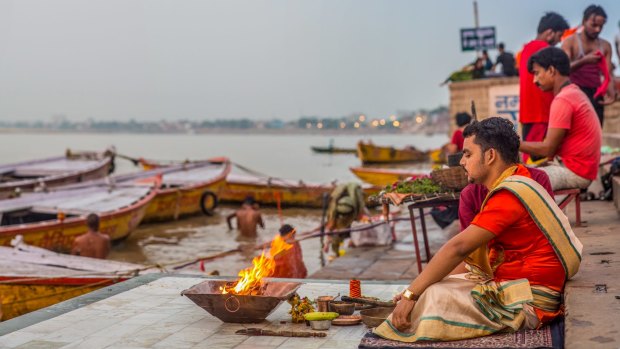
Credit: iStock
Hinduism's holy city is home to some spectacular ceremonies. Among the most striking is the Aarti ritual, which takes place daily at dawn and dusk. Chanting, gongs and drums provide the soundtrack as priests circle huge oil lamps making offerings to Shiva and to the Ganges. See incredibleindia.org
THE SEDUCTION OF WATER
No other element is as friendly as water. While it can be destructive – as demonstrated by the recent flooding in Venice – more often, water is a friend. It even talks to us, murmuring as it ripples over the shore, chuckling as it dances across stones, splashing or roaring depending on its mood.
When Australians think of water, they tend to think of the big blue, the oceans that cover 70 per cent of the planet's surface (or in the time of ongoing drought, the lack of its vital fresh equivalent).
As an island continent, we respond viscerally to the beauty of a coastline, from bays and beaches to mangroves and marshes. The sound of waves lapping on the shore is the soundtrack to many happy holiday memories, yet the ocean is just one of water's many manifestations.
No other element can enchant us in as many different ways as water does. Water is a chameleon, a shapeshifter, a testament to the powers of possibility. It can appear as flakes of snow that land delicately on the tips of our tongues or accumulate in crusty layers atop mountains.
It can spurt from the earth's crust as superheated steam, billowing up as a geyser that delights us with its magnificent plumes. It can seep slowly or pour out at heroic speed. Sometimes it surges faster than a bullet train, plummeting over a cliff's edge in the glorious sprays of a waterfall; at other times, it is glacial, frozen into immobility.
Above all else, however, water is the giver of life. It quenches our thirst and helps us grow our food. The earliest civilisations rose up on the banks of rivers, most spectacularly in ancient Egypt, the world's very first nation-state.
The Egyptian empire was built both literally and metaphorically on the banks of the Nile. Thanks to the dependable annual inundations of the river, the pharaohs were able to rule for an extraordinary 3000 years, using their immense wealth to create monuments that awe visitors even today.
Water not only gave birth to civilisations; it helped them reach out to each other. Endless fleets – carrying Phoenicians and Vikings and Polynesians and more - followed rivers, hugged coastlines, and eventually struck out into the blue, trading and exploring and fighting, weaving threads that bind us even today.
FIVE WATERY WONDERS OF THE WORLD
STROKKUR, ICELAND
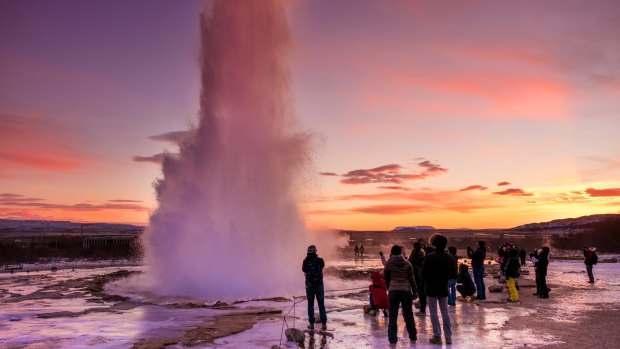
Credit: iStock
Geysers don't get much more excitable than Iceland's Strokkur, which shoots water 30 metres into the air every few minutes. Iceland's most dependable geyser is just one of the island's many fluid-filled marvels, which also include eye-catching waterfalls such as Gullfoss and Dettifoss. See iceland.is
ICEBERG ALLEY, CANADA
In Japan, spring is cherry blossom season. In eastern Canada, it's iceberg season. Head for the coasts of Newfoundland and Labrador to admire the solemn procession of majestic icebergs that, having broken free of the Arctic glaciers, drift slowly along the coast. Rug up, pick a perch along the shore, and prepare to be awed. See au-keepexploring.canada.travel
POSTOJNA CAVE, SLOVENIA
Few things are as ephemeral as a single drop of water. Give it a few hundred thousand years, however, and a flow of mineral-rich water-drops can create wonderlands such as the Postojna Cave system, 24 kilometres of caverns filled with glittering stalactites and stalagmites. See slovenia.info/en
JAFFA, ISRAEL
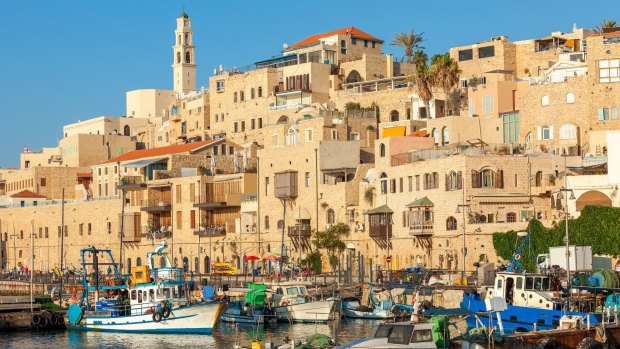
Credit: iStock
Over the past 400 years, this port city has been conquered by powers including the Egyptians, Persians, Greeks, Romans and Crusaders - a testament to the essential role of waterborne trade in history. Visitors today can still walk through ruins of the Greek and Roman ports. See info.goisrael.com
SUZHOU, CHINA
Long before Venice's canals emerged from the lagoon, the Suzhou Grand Canal – all 1800 kilometres of it - helped transport grain from China's fertile river valleys to its booming cities. These days the canal town of Suzhou, its waterways lined with ancient buildings and verdant gardens, is one of China's most popular destinations. See travelchina.gov.cn
Sign up for the Traveller newsletter
The latest travel news, tips and inspiration delivered to your inbox. Sign up now.